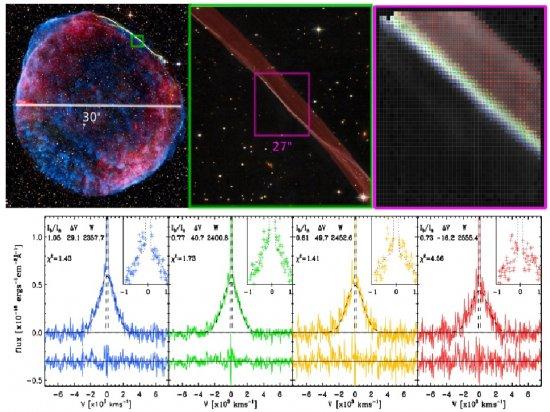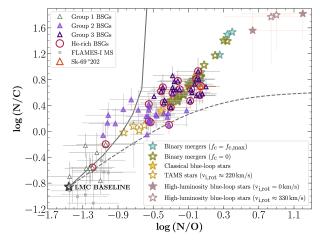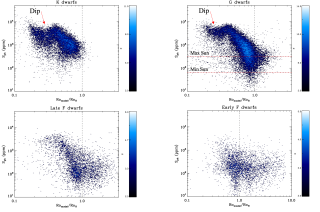Supernova remnants are among the most spectacular examples of astrophysical pistons in our cosmic neighborhood. The gas expelled by the supernova explosion is launched with velocities ∼1000 km/s into the ambient, tenuous interstellar medium, producing shocks that excite hydrogen lines. We have used an optical integral-field spectrograph to obtain high-resolution spatial-spectral maps that allow us to study in detail the shocks in the northwestern rim of supernova 1006. The two-component Halpha line is detected at 133 sky locations. Variations in the broad line widths and the broad-to-narrow line intensity ratios across tens of atomic mean free paths suggest the presence of suprathermal protons, the potential seed particles for generating high-energy cosmic-rays.
VIMOS-IFU spectroscopy of the shock front in the remnant of SN 1006. The top-left panel shows a composite imageof the full remnant (≈30′ in diameter), combining data from the Very Large Array and Green Bank Telescope (red;NRAO/AUI/NSF/GBT/VLA/Dyer, Maddal
Advertised on
References
2013, Science DOI: 10.1126/science.1228297



